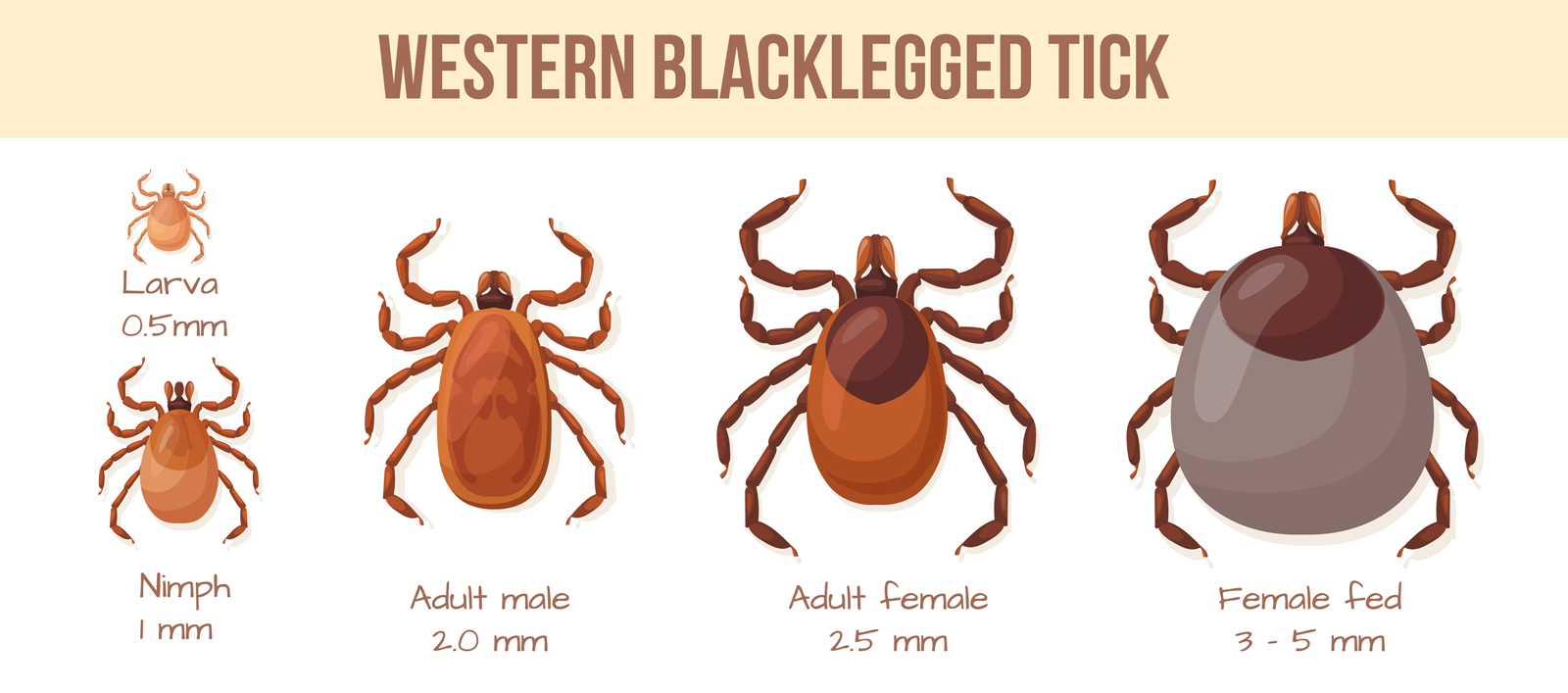As the weather warms and outdoor adventures call, it's important to remember that ticks — small, parasitic insects that can sometimes transmit disease — are becoming increasingly common in BC.
Climate change is altering the natural environment. Milder winters mean fewer ticks die off during colder months, and earlier springs and longer summers allow them to be active for more of the year. This expanded range and longer active season increase the likelihood of human and pet encounters with ticks. Species such as the Black-Legged tick, known for carrying Lyme disease, are now being found in areas where they were previously rare.
How to Stay Healthy on the Land
Spending time on the land offers important physical, mental, and cultural benefits — from boosting fitness and reducing stress, to strengthening connections with community, identity, and traditional knowledge. If you're spending time on the land, here are a few simple steps to protect yourself and your loved ones:
1. Dress Defensively: Reduce exposed skin by wearing long-sleeved shirts and pants. Tuck pants into socks to make it harder for ticks to reach your skin. Wear light coloured clothing to make it easier to spot ticks.
2. Use Repellent: Apply insect repellents containing DEET, icaridin, or essential oils (oil of lemon eucalyptus or permethrin are most effective) on skin and clothing.
3. Check Regularly: Be mindful when walking through tall grass and dense underbrush where ticks are commonly found. After outdoor activities, carefully check your body (and your pets) for ticks, especially hidden areas like behind the knees, underarms, scalp, and waistband.
4. Shower Soon After Being Outdoors: Showering within two hours of being outdoors can help wash away unattached ticks and provides a good opportunity to check for them.
5. Proper Tick Removal: If you find a tick attached to your skin, carefully remove it with fine-tipped tweezers. Grasp the tick as close to the skin as possible and pull upward steadily. Clean the bite area and your hands thoroughly.
If you find a tick, you can help public health monitoring efforts by reporting it through the eTick website. You can upload a photo to get a free identification and learn if the tick species you encountered may carry disease.
When to Seek Medical Advice
Tick bites are often harmless, but some can spread bacteria and viruses and make you very sick. If you develop symptoms such as a rash (especially a "bullseye" rash), fever, fatigue, or joint pain within weeks of a tick bite, contact a health care provider. Early diagnosis and treatment of tick-borne illnesses like Lyme disease are key to recovery.

There are more than 20 species of ticks in BC, but only three typically bite humans:
- The Western Black-Legged Tick, most common in southwest BC (Vancouver Island, Gulf Islands, Sunshine Coast, Greater Vancouver, Fraser Valley), can carry Lyme disease – though fewer than 1% of ticks tested in BC carry the bacteria that cause Lyme disease.
- The Rocky Mountain Wood Tick, found in BC's interior dry belt (from the US border north to Williams Lake and east into Alberta), can transmit Rocky Mountain spotted fever (rare in Canada), and may cause tick paralysis in humans and livestock.
- The Brown Dog Tick mainly feeds on dogs and rarely bites humans.
Public health agencies in BC, including the BC Centre for Disease Control, offer up-to-date information on tick activity, Lyme disease risk areas, and prevention tips. Staying aware can help you safely enjoy being on the land this season.

